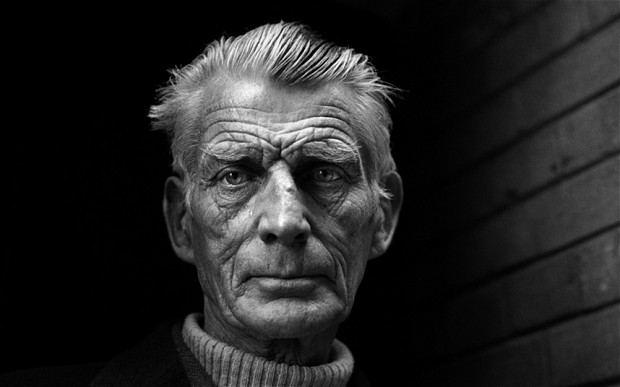Silence to Silence
Seán O’Mórdha / Ireland / 1984 / 83 mins
As part of the International Beckett Season, celebrating the life and works of Samuel Beckett, this weekend the Barbican screened a selection of the playwright’s works for television and film. Entitled Quiet Pathos, the event combined Beckett’s only screenplay with a 1984 documentary about the playwright.
Film: A Screenplay by Samuel Beckett highlights the writer’s interest in voyeurism, comedy and characters in the later stages of life. The viewer becomes a presence in the film, with the characters shying away from the camera lens (which is even given a name in Beckett’s script) and glancing nervously as it pans slowly down dark, dirty streets.
A disheveled figure known only as “O” stumbles across the road, concealing his face from the viewer. He shuffles along a wall, trying to avoid being seen by the camera, before stumbling onto a spade which strikes his face in a moment reminiscent of classic slapstick comedy.
In the original production of Film, Beckett had a number of actors that he desperately wanted for the role of O, including Charlie Chaplin and Zero Mostel. The role was eventually taken by Buster Keaton, another great comedy actor of his generation. The idea, as once expressed by another Beckett character, that ‘nothing is funnier than unhappiness’ informed much of Beckett’s work and Film is no exception.
This 1979 remake of Film starring Max Wall was created without Beckett’s permission, but stays faithful to the thematic and visual elements of Beckett’s own production. Elements of the piece, such as O wearing more than one jacket and continually trying to herd a small cat and dog out of his bedroom, help to highlight the playwright’s obsession with pathetic imitations of comedy.
The 1984 documentary Silence to Silence, directed by Seán O Mórdha, explores the ways in which quiet became a central concern of Beckett’s oeuvre. The film also delves into the playwright’s formative years, including his difficult relationship with his mother and his time in the French Resistance during the Second World War.
The documentary seems in many ways to have taken inspiration from the writer’s work; an old man walks slowly through the snow-strewn hills of Ireland as a deep voiceover intones verses from Beckett’s plays and novels.
The consecutive screenings of Film and Silence to Silence allow for Beckett’s only screenplay to be understood in the context of his wider body of work and early life. The idea of “quiet pathos” not only informed Film, but all Beckett’s work, displaying a preoccupation, and fascination, with weak and helpless characters – especially those who seem trapped, be it physically or mentally.
Part of the International Beckett Season at the Barbican, 2 – 22 June 2015
